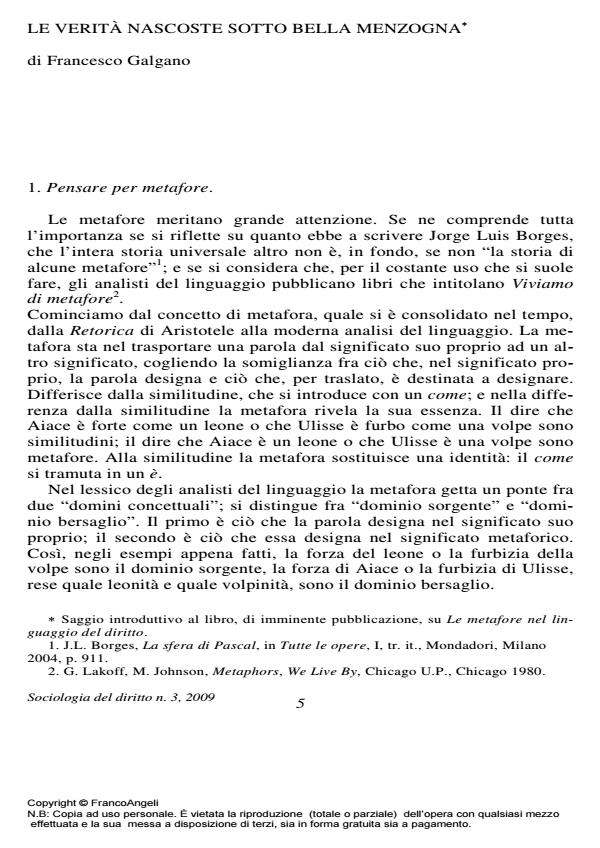The Truth that Hides beneath Falsehood
Journal title SOCIOLOGIA DEL DIRITTO
Author/s Francesco Galgano
Publishing Year 2010 Issue 2009/3
Language Italian Pages 15 P. 5-19 File size 416 KB
DOI 10.3280/SD2009-003001
DOI is like a bar code for intellectual property: to have more infomation
click here
Below, you can see the article first page
If you want to buy this article in PDF format, you can do it, following the instructions to buy download credits

FrancoAngeli is member of Publishers International Linking Association, Inc (PILA), a not-for-profit association which run the CrossRef service enabling links to and from online scholarly content.
Metaphors can be found in every form of linguistic communication, including the language of precepts, such as that used in legal orders. It represents reality figuratively, equating similarity with identity, converting the "as if" into an "it is". Dante described a metaphor as the "truth that hides beneath a beautiful falsehood". A metaphor is generally harmless enough: nobody treats what is only a successful verbal device as if its success alone were enough to make it true. Nonetheless, it can be insidious: this is sometimes the case in legal language, when a metaphor attributes to an abstract entity a name that also belongs to something in the tangible world, thus moving beyond the realms of common sense. This leads to a risk that the metaphor will be taken seriously and mistaken for reality, as in the case of what has happened with legal persons, securities, intellectual property and so on. This does not mean that we should go to the opposite extreme, as some have done, that of outlawing a concept from our language as soon as its metaphorical nature is revealed. Metaphors are very often effective ways of summarising lengthy and complex verbal reasonings that could otherwise only be expressed in elaborate circumlocutions. The point is that, once this "hidden truth" is identified, the right way to proceed is to use the truth itself, rather than the "beautiful falsehood" that summarises it, for the purpose of drawing legal conclusions.
Francesco Galgano, Le verità nascoste sotto bella menzogna in "SOCIOLOGIA DEL DIRITTO " 3/2009, pp 5-19, DOI: 10.3280/SD2009-003001